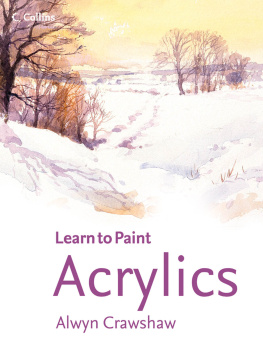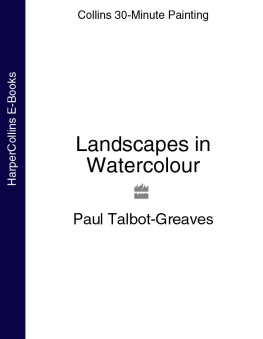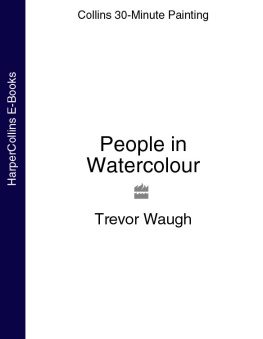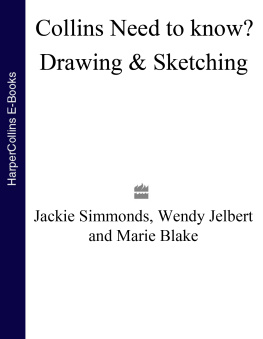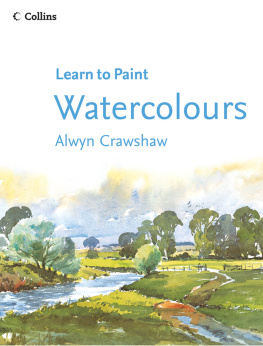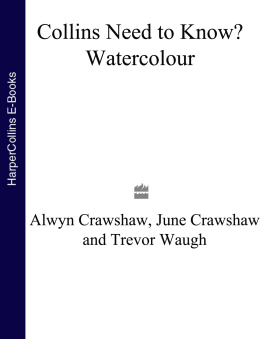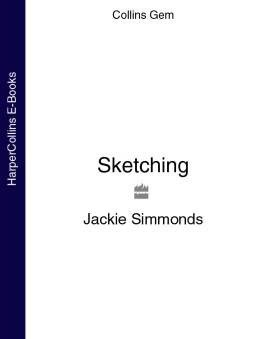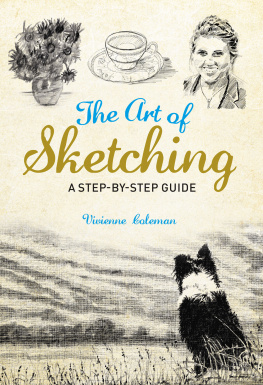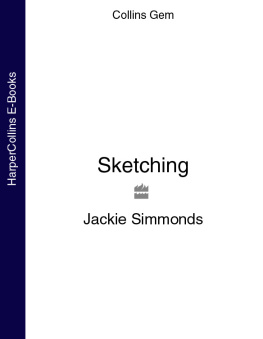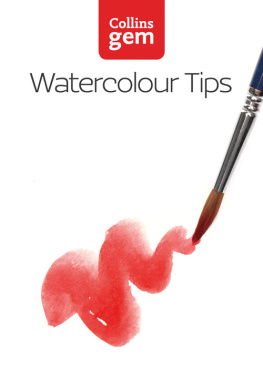
From My Studio, 21 x 28 cm (8/ x 11 in)
Sketching
Alwyn Crawshaw
First published in 2008 by
Collins, an imprint of
HarperCollinsPublishers
1 London Bridge Street
London SE1 9GF
www.harpercollins.co.uk
Collins is a registered trademark of HarperCollins Publishers Limited.
Alwyn Crawshaw 2008
A catalogue record for this book is available from the British Library.
Editor: Diana Vowles
Designer: Kathryn Gammon
Alwyn Crawshaw asserts the moral right to be identified as the author of this work.
All rights reserved under International and Pan-American Copyright Conventions. By payment of the required fees, you have been granted the nonexclusive, non-transferable right to access and read the text of this e-book on screen. No part of this text may be reproduced, transmitted, downloaded, decompiled, reverse engineered, or stored in or introduced into any information storage retrieval system, in any form or by any means, whether electronic or mechanical, now known or hereinafter invented, without the express written permission of HarperCollins e-books.
Source ISBN 9780007259380
Ebook Edition OCTOBER 2018 ISBN: 9780008325794
Version: 2018-12-05
HarperCollinsPublishers has made every reasonable effort to ensure that any picture content and written content in this ebook has been included or removed in accordance with the contractual and technological constraints in operation at the time of publication.
I would like to dedicate this book to June, my wife, for her continual support with all my artistic endeavours.
Contents


Thurne Dyke
(detail, actual size in the print edition only.)
The most important part of this location sketch was the drawing, as it is a complicated scene with lots of activity.
Sketching is the most uplifting and enjoyable way to paint and it is a great teacher, whether you are working with pencil or paint, outdoors or indoors. There is no pressure on you, as you are not painting for an exhibition or to please your friends or family; you are sketching for your own enjoyment. Nevertheless, you can go on to show your sketches in exhibitions.
Because of the relaxed way in which they are done, sketches can often have more energy and dynamism than a highly finished work, and indeed some of the Old Masters sketches are actually preferred to their exhibition paintings.
What is a sketch?
There are three different types of sketches: an information sketch, done solely to collect information or detail; an atmosphere sketch, where the aim is to record the atmosphere and mood for a finished painting; and an enjoyment sketch, done usually on location simply to enjoy the experience. It is the enjoyment sketch that I will concentrate on in this book the information and atmosphere sketches will develop as you gain experience.

Spanish Truck
This information sketch was done with a 2B pencil so that I could quickly put in shading to make the truck look three-dimensional and also add some detail.
30-minute sketches
Why a limit of 30 minutes? First, it will stop you fiddling and looking for something extra to do in your sketch, which can lose the spontaneity of it a good sketch can be spoilt by overworking. Secondly, it will teach you how to observe your subject.
Many of the sketches I have done in the book have taken about 30 minutes, though some have taken a little less. Practise the techniques I describe for as long as you need and use the clock only when you have the confidence to start sketching. It is very important to take your time and carefully observe your subject, deciding how you are going to draw or paint it, before you start the sketch or, of course, the clock.

Beach Deckchair
I used a 2B pencil to make a quick sketch of a deckchair on a beach while I was on holiday. It was done purely for enjoyment.
The aim of this book
In this book I will take you by the hand and show you how to enjoy your sketching without too much historical and technical information to complicate things. When you were at primary school you would draw or paint without any thoughts of whether it was good or bad you had no inhibitions, you did it just for your own enjoyment. This is how I want you to approach sketching.
Remember that the 30-minute time limit is a guide only. We all have our own natural speed of working, but in all my 50 years of painting and teaching I have found working to a limited time one of the most inspiring and exciting exercises to do and some of my students best work has been done this way. So have a go I know the 30-minute clock will help you.

Valletta, Malta
20 x 28 cm (8 x 11 in)
This watercolour enjoyment sketch may look more time-consuming, but notice how the distant buildings are done very freely.

Morston Quay, Norfolk
20 x 28 cm (8 x 11 in)
I painted this on location, using the minimum equipment needed for sketching outdoors.
For a beginner, going into an art materials shop must be very confusing. There are hundreds of brushes, many different papers and a bewildering choice of sketchbooks, pencils and paints, all invitingly displayed.
However, help is here: on the next two pages I will show you the basic simple materials you should buy. You dont need a large range of equipment for sketching, and for working on location you certainly wont want to carry a lot with you. Keep things simple with your materials at first and get used to them if you want to try different ones, experience will guide you as you progress.
Pencils

A basic pencil sketching kit: 2B, 3B and 6B pencils, a putty eraser and sketchpads.
Pencils are available in a range of grades. The most familiar one, which you will find in any stationery shop, is HB. The letter H stands for hard lead, and the range covers 2H, 3H, 4H, 5H and 6H. The hardest pencil is the 6H. On the other side of HB are the B (soft lead) grades 2B, 3B, 4B, 5B, 6B. The softest pencil is the 6B.
I use a 2B pencil for most of my sketching, but there are occasions when I turn to a 3B or a 6B. These are the three pencils you need for the exercises in this book. You will also require a putty eraser for rubbing out your pencil marks. It is impossible to get everything correct the first time, so an eraser is as important to you as your pencil.


